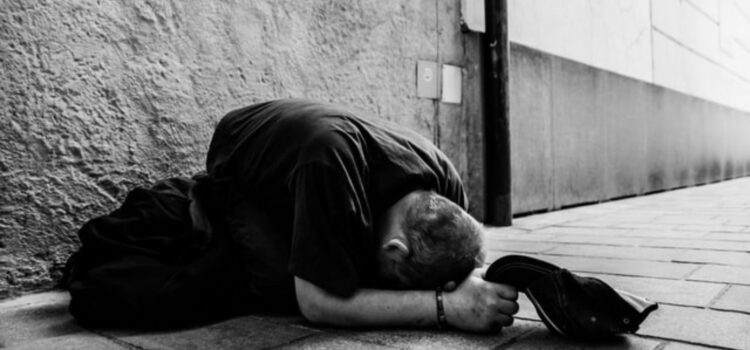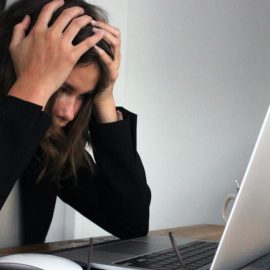

This article gives you a glimpse of what you can learn with Shortform. Shortform has the world’s best guides to 1000+ nonfiction books, plus other resources to help you accelerate your learning.
Want to learn faster and get smarter? Sign up for a free trial here .
Can poverty be solved? What can be done to bridge the global divide between the rich and the poor?
Poverty is a global problem—it plagues all countries to some extent. A small minority of the world’s population has amassed vast fortunes, while billions of people remain mired in extreme poverty.
In this article, we’ll discuss the causes and consequences of poverty and how to solve poverty on a global scale.
The Consequences of Poverty
About one billion people around the globe live in persistent poverty—in countries where the economy is constantly struggling and incomes are stagnant or shrinking. Even in the most developed nations, thousands of people live below the poverty line.
Poverty, and more generally, economic inequality is directly linked to all ills of modern societies—like crime, drug abuse, lack of educational attainment, and low life expectancy—and undermines democratic institutions and social cohesion.
Moreover, inequality fuels a feedback loop that leads to more inequality, as the wealthy can use their outsized political power to lobby for economic policies that make them even richer—all while fueling wasteful conspicuous consumption that harms our environment and drives more people below the poverty line.
Addressing Poverty
There’s no simple solution to the problem of poverty, but with joint efforts, this goal is achievable. Here are some potential solutions for alleviating poverty in the world.
Reframing the Problem of Poverty
In her book Development as Freedom, economist Amartya Sen explains how to solve poverty in the world. The first step, she says, is to redefine poverty as a social problem rather than an income problem. Sen contends that income and wealth are only important as a means to something else, not for their own sake. As such, poverty is about more than low income—it’s about a lack of opportunity. Conversely, the solution is about more than simply increasing wealth—it’s about increasing opportunity.
Sen contends that focusing on income to assess development doesn’t fully reflect people’s welfare or well-being. Consideration of freedom and accepting that poverty is a social problem provides a more well-rounded picture. Sen views income-centered development as inadequate because it overlooks aspects of welfare that people value. Here are three oversights of the income approach:
- Varying effects of GDP on health
- Social costs that persist even with income transfers to the poor
- The possibility that overall welfare may improve without strong GDP growth
We will consider each of these in turn, providing examples Sen uses to support each claim.
1. Increased Wealth Doesn’t Improve Health
Often, income alone doesn’t tell the full story of well-being. For example, Sen notes that African Americans have per capita incomes much higher than the average person living in developing countries like Sri Lanka, Costa Rica, or Jamaica. However, African Americans have lower life expectancies (a measure of well-being) than people in each of these three nations. Therefore, the mere fact that they’re wealthier doesn’t necessarily translate to better standards of living.
2. Income Transfers Don’t Address Social Problems
Eradicating poverty by increasing people’s income through government programs doesn’t necessarily improve their well-being because it often doesn’t address social problems. For example, Sen explains that many European nations, which typically have unemployment rates above 10%, generously supplement the incomes of unemployed people. But research indicates there are numerous social costs associated with being unemployed, including negative effects on physical and psychological health, as well as social ostracism.
Sen argues that European unemployment subsidies don’t increase overall well-being because they fail to account for these residual costs. Helping the disadvantaged requires more than just subsidizing their incomes, it requires expanding their opportunities.
3. Social Services Don’t Have to Rely on Economic Growth
Sen says poor nations shouldn’t wait for economic growth to provide social services. The reason has to do with the relative costs of poor nations making such investments. Because social services like education and health care are labor-intensive (they rely much more on people rather than technology), the costs of providing them sooner are lower, too.
If a nation waited to get wealthier before making these investments, that wealth would increase the costs of these investments. According to Sen, this happens because jobs in social services demand higher wages when overall incomes rise. By waiting for a rise in wealth, nations are just contributing to the social problem that is poverty.
TITLE: Development as Freedom
AUTHOR: Amartya Sen
TIME: 43
READS: 27.9
IMG_URL: https://www.shortform.com/blog/wp-content/uploads/2022/06/development-as-freedom-cover.png
BOOK_SUMMARYURL: development-as-freedom-summary-amartya-sen
AMZN_ID: XYZ
Giving the Poor Easier Choices
In addition to reframing the problem of poverty to take into account its social effects, it’s also important that we work towards alleviating the problems the poor face on an everyday basis. In Poor Economics, MIT professors Esther Duflo and Abhijit Banerjee explain how to solve poverty by giving the poor easier choices.
Wealthy people living in wealthy countries have many difficult decisions made for them, which benefits them because they then don’t have the opportunity to make poor decisions. Their water is purified, their healthcare providers are highly trained and closely regulated, their foods are fortified with key nutrients and regulated to ensure they’re safe, their assets are protected, they have money set aside for the future through Social Security or other financial institutions, and so on.
The poor have none of these things. They have to purify their own water, figure out ways to save for the future outside of typical financial institutions, make complicated decisions about their healthcare, and more. Such decisions are difficult for anyone to make, but especially for the poor, who feel the constant pressure of a lack of resources, information, and basic economic security.
One way to do this is by ensuring default options are good. For example, if tasty cereals are fortified and made readily available, it’ll be easier for the poor to get critical micronutrients into their diet.
Referring to Richard Thaler and Cass Sunstein’s book, Nudge, Banerjee and Duflo propose a second way to make good decisions easier for the poor: Nudge them toward the right choices. For example, savings accounts could be structured to encourage deposits and discourage withdrawals.
TITLE: Poor Economics
AUTHOR: Abhijit V. Banerjee and Esther Duflo
TIME: 17
READS: 27.3
IMG_URL: https://www.shortform.com/blog/wp-content/uploads/2022/07/poor-economics-cover.png
BOOK_SUMMARYURL: poor-economics-summary-abhijit-v-banerjee-and-esther-duflo
AMZN_ID: XYZ
Promoting Microfinance
In When Helping Hurts, Christian economic development experts Steve Corbett and Brian Fikkert point out that poor people often benefit from programs that enable them to accumulate savings or allow them to borrow money that they can use to improve their situation. These programs are usually best administered at the local level. The local church can directly establish a savings and credit association—a group of people who pool their savings, make small loans to each other, and collect interest on the loans, which helps build their savings. Or the local church may, in turn, collaborate with a microfinance company—basically a bank that’s willing to handle smaller loans than traditional financial institutions.
| Criticism of Microfinance Some sources argue that microfinance institutions are actually not as effective at helping the poor as Corbett and Fikkert suggest. In Poor Economics, Abhijit Banerjee and Esther Duflo discuss a number of factors that limit the usefulness of microfinance loans. For one thing, they note that microfinance companies typically prefer to make a loan to a group of people rather than to an individual. Relative to making individual loans, this reduces administrative costs (because there are fewer loans to track). Moreover, it reduces the risk of non-payment, both because other people in the group must make up the difference if one person fails to repay his share of the loan and because this possibility motivates the members of the group to verify each other’s integrity before taking out the loan. However, shifting more of the liability and credit verification to the loan recipients also makes loans less attractive to poor people. Both Corbett and Fikkert and Banerjee and Duflo also note that microfinance companies were created to provide poor people with a more helpful alternative to predatory lenders (lenders that charge exorbitant interest rates to cover the risk of loaning money to people with no credit). But some sources report that in recent years the distinction between predatory lenders and microfinance institutions has become blurred, leading poor people to borrow money at high interest rates and become trapped in debt. |
Final Words
Poverty is an insidious trap that is extremely difficult to escape. Poor people are so focused on stretching their limited resources that they simply don’t have the time or energy to think about anything else. Therefore, poverty is a self-perpetuating problem, so it has to be battled on the institutional level.
If you enjoyed our article about how to solve poverty, check out the following suggestions for further reading:
In The Bottom Billion, British economist Paul Collier argues that traditional economic theories and development aid programs have paid too little attention to what he calls “the bottom billion” countries, instead focusing on emerging markets that don’t require help from the West to grow.
The “bottom billion” are stuck in “poverty traps,” and will stay stuck, unless governments, aid agencies, international organizations, and private charities get together to decide how to solve poverty in these countries.

Want to fast-track your learning? With Shortform, you’ll gain insights you won't find anywhere else .
Here's what you’ll get when you sign up for Shortform :
- Complicated ideas explained in simple and concise ways
- Smart analysis that connects what you’re reading to other key concepts
- Writing with zero fluff because we know how important your time is






